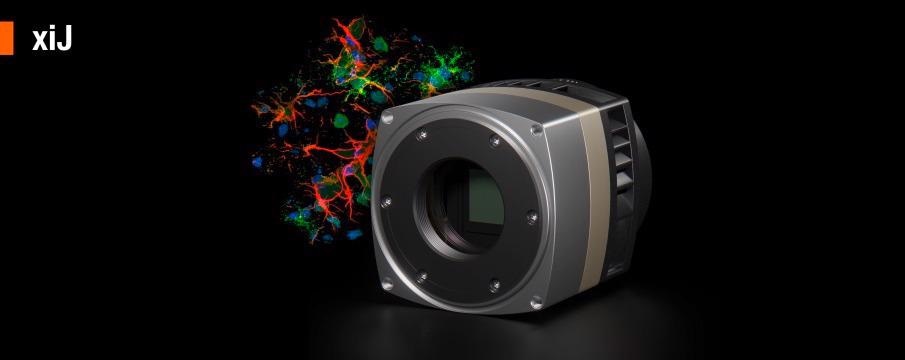Continuous progress in scientific fields places ever higher demands on the tools used in various research application areas. To meet these increased requirements XIMEA has integrated the newest technologies improving the parameters important for the scientific community.

Image Credit: XIMEA
This progress started with the introduction of the newest Scientific CMOS (sCMOS) sensors by Gpixel company, assembled mainly under GSENSE family.
The XIMEA team chose to start with models based on GSENSE5130, GSENSE400, GSENSE6060 and especially GSENSE2020 including the BSI versions.
The main distinguishing features of the sCMOS sensors are their remarkable Dynamic range of up to 90 dB and exceptionally low noise down to 1 e-.
With the BSI or Backside illuminated versions the sensor gets an additional boost in the Quantum efficiency in certain cases reaching 95% sensitivity.
Present is also the HDR mode where for each pixel Low and High gain channels are readout with two 12 bit ADC samples resulting in merged 16 bit.
This further allows optimizing the image quality output, either for the lowest noise or highest Full well capacity, saturation and other parameters.
To provide flexibility, XIMEA designed several camera versions for each sensor with some focused on the full speed potential and some on ultimate image properties.
This was the reason to offer the cameras with Thermoelectric Peltier cooling or with a fast interface represented by the PCIe able to reach 20 Gbit/s and more.
Therefore the models with high speed are oriented on Global shutter mode and models meant for low noise are optimized for the Rolling shutter.
The cooled models are ideal for low light applications reducing dark noise during long exposure times, whereas PCIe models are perfect for rapid process capturing.
To summarize, the sensor models joining the XIMEA portfolio as first are prepared in versions with USB3 or PCIe interface and provide the following parameters (full table at: https://www.ximea.com/en/products-news/cooled-scmos-scientific-grade-cameras):
- 4.2 Mpix, Gpixel GSENSE2020e, frontside illuminated monochrome, 2048 x 2048, 6.5 μm pixel, 1.2" with PCIe interface
- 4.2 Mpix, Gpixel GSENSE2020 BSI, backside illuminated monochrome, 2048 x 2048, 6.5 μm pixel, 1.2" with PCIe interface
- 4.2 Mpix, Gpixel GSENSE2020 BSI, backside illuminated monochrome, 2048 x 2048, 6.5 μm pixel, 1.2" with TEC and USB3
- 4.2 Mpix, Gpixel GSENSE400, frontside illuminated monochrome, 2048 x 2048, 11 μm pixel, 2" with TEC and USB3
- 4.2 Mpix, Gpixel GSENSE400 BSI, backside illuminated monochrome, 2048 x 2048, 11 μm pixel, 2" with TEC and USB3
- 15 Mpix, Gpixel GSENSE5130, frontside illuminated monochrome, 5056 x 2968, 4.25 μm pixel, APS-C with TEC and USB3
- 37.7 Mpix, Gpixel GSENSE6060, frontside illuminated monochrome, 6144 x 6144, 10 μm pixel, Medium with TEC and PCIe
- 37.7 Mpix, Gpixel GSENSE6060 BSI, backside illuminated monochrome, 6144 x 6144, 10 μm pixel, Medium with TEC and PCIe
High speed and resolution, large sensors and pixels, low light sensitivity, and unbeatable Quantum efficiency, plus overall adaptability make these cameras shine.
With a plethora of options like these, it is important to understand the exact requirements of the specific application.
If high speed is relevant or long exposure times are critical.
Applications examples include:
| FRET |
FRAP |
FISH |
TIRF |
FCS |
NEO |
| Fluorescence Resonance Energy Transfer |
Fluorescence recovery after photobleaching |
Fluorescence in situ hybridization |
Total internal reflection fluorescence |
Fluorescence correlation spectroscopy |
Near Earth Object detection |
| PALM |
STORM |
SPIM |
OCT |
CARS |
BEC |
| Photoactivated localization microscopy |
Stochastic Optical Reconstruction Microscopy |
Single Plane Illumination Microscopy |
Optical coherence tomography |
Coherent Anti-Stokes Raman Scattering |
Bose-Einstein condensates |